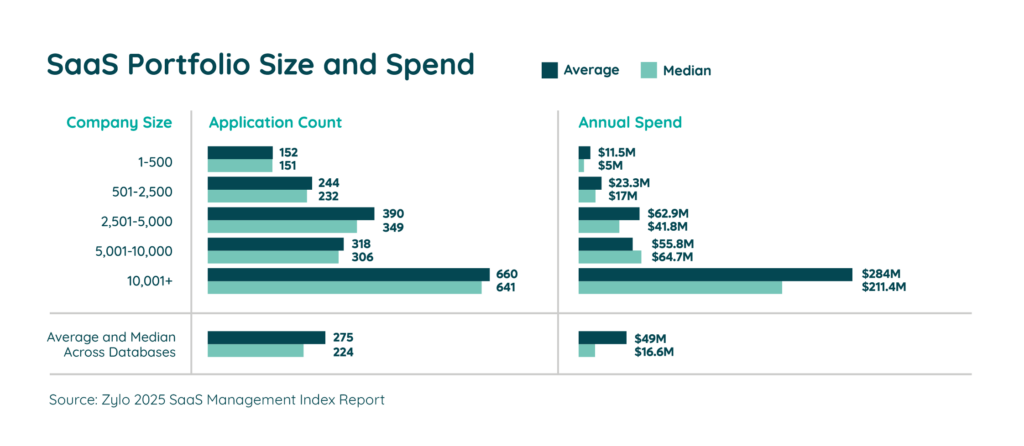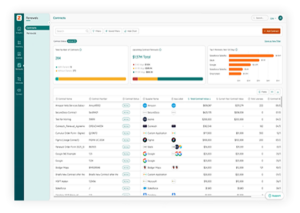Software procurement looks fundamentally different today compared to just a few years ago, thanks in part to the explosion of software-as-a-service (SaaS) applications.
Once relegated to centralized IT teams, individual employees now account for a majority of software purchases, mostly due to the ease of adoption and relative low cost. Employees simply need to input a credit card number, gloss over the contractual terms, and voilà — they’re up and running in minutes (no hardware required).
While these intuitive SaaS tools help teams automate processes and excel at their jobs, purchasing SaaS off the grid from IT departments leads to duplicative software purchases, security breaches, and missed renewals.
More likely than not, your organization has hundreds of SaaS contracts lurking in employee inboxes. To stay on top of renewals, consider implementing strategic IT vendor contract management strategies.
The Ultimate Guide for Wildly Effective SaaS Renewals
Learn MoreVendor Contract Management Meaning
Before diving into strategy, it’s important to define vendor contract management, and understand why it’s important for SaaS applications. Put simply, vendor contract management involves managing the complete vendor contract lifecycle, including creation, negotiation, agreement, storage, and tracking.
Effective vendor contract management enables all stakeholders — legal, procurement, finance, and IT — to control costs and mitigate risk. It also makes it easy to see your complete SaaS inventory in a central location, ensures you’re making the most of that investment, and helps you proactively plan for contractual renewals.
How It Applies to SaaS
While vendor contract management provides a valuable function for any company or industry, the practice becomes hyper critical when it comes to the hundreds or even thousands of SaaS tools many companies employ.
In fact, most organizations drastically underestimate the full extent of their SaaS inventory. To drive the point home, consider some of these stats from Zylo’s SaaS Management Index:
- The average large enterprise business maintains 660 SaaS applications.
- On average, enterprises underestimate SaaS applications by nearly 2X. If you consider the 650 figure, that means roughly 300 applications remain in the shadows.
- In 2024, the average large enterprise experienced two SaaS renewals each business day – or 476 each year.

With more than 70% of organizations now exclusively using SaaS applications over traditional software, businesses need proactive SaaS vendor contract management solutions to ensure maximum value for the investment.
And let’s face it: It’s impossible to effectively manage something you don’t know exists. That’s why you need a plan to govern SaaS vendor contracts, and proactively manage vendor relationships to maximize purchasing power.
Establish a SaaS Vendor Contract Management Process
Regardless if you work for a tech start-up or large enterprise, take control of your SaaS vendor contracts and build a process that takes into account these core strategies:
Discover all SaaS applications and related contracts: The first step to managing SaaS contracts involves identifying all SaaS applications across your organization. Look for employee-led purchases that may be unknown to your IT department. If your organization lacks a central database, you’ll need to contact individual teams or business units to determine your full SaaS inventory.

Make sure to document these contract details in your central system of record:
- Start date: It’s also commonly referred to as the commencement or effective date.
- End date: Depending on the application, the contract may refer to this as the renewal or termination date.
- Termination notification length: This information typically appears in the termination section of SaaS agreements, and specifies the length of notice required to terminate the contract.
- Total contract value: Refers to the combination of all financial commitments for each SaaS subscription across all business units and teams.
- Total quantity of licenses and license types: SaaS purchases typically come with a set number of licenses and types, such as standard and premium.
- Billing frequency: Make sure to document billing frequency, including key dates.
- Consumption metrics, billing units: Includes any unit of value that commands pricing and has a predetermined limit or capacity.
- Additional line-item details: Ensure you document important line items, such as quantity of licenses, unit price per license, license allocation, and other key details.
- Data handling and regulatory compliance: Set a plan to protect user data, should your organization choose to sever ties with a SaaS provider.
- Establish a single system of record: With all SaaS vendor contracts easily discoverable in a centralized, company-wide database, you can seamlessly find optimization opportunities, including:
- Consolidate duplicate subscriptions: Duplicate subscriptions mean you are paying for the same SaaS application multiple times. Up to 12% of all SaaS applications in a large organization are the result of duplicate purchases.
- Address redundant applications: Common redundant applications include web conferencing, project management, digital asset management, and recruiting tools.
- Rightsize contracted licenses based on actual usage: Look for opportunities to downgrade premium licenses to free licenses, and remove or reallocate underutilized licenses.
- Proactively manage renewals: Leverage renewals to upgrade services, lower costs, and most importantly — never miss another auto-renewal.
Let Zylo Handle Your SaaS Contract Management
Remember, SaaS vendor contract management requires continuous, year-round discovery, documentation, and analysis. The average organization adds eight new SaaS applications per month, and without intuitive contract lifecycle management software, you quickly lose track of contracts and their renewal periods.
Use Zylo to help you manage your SaaS contracts, so you never need to worry about finding original contracts or service agreements, or miss an unnecessary software renewal. Request a demo to see how it works!

